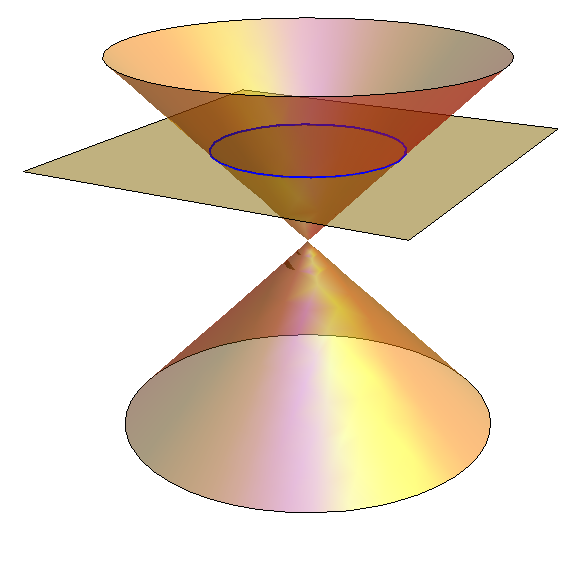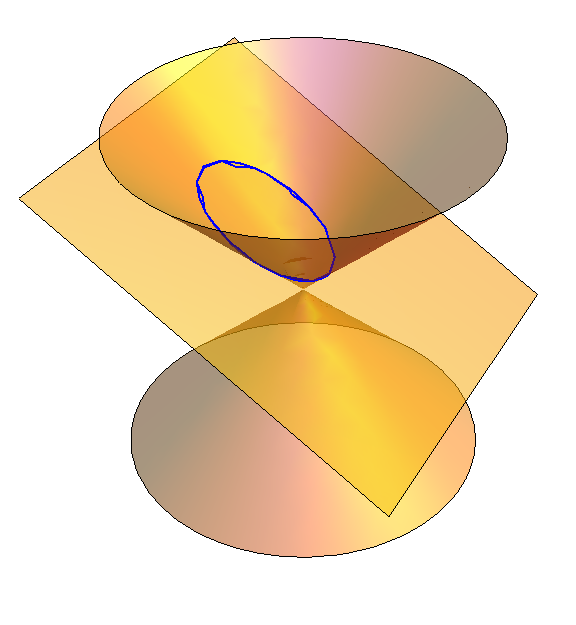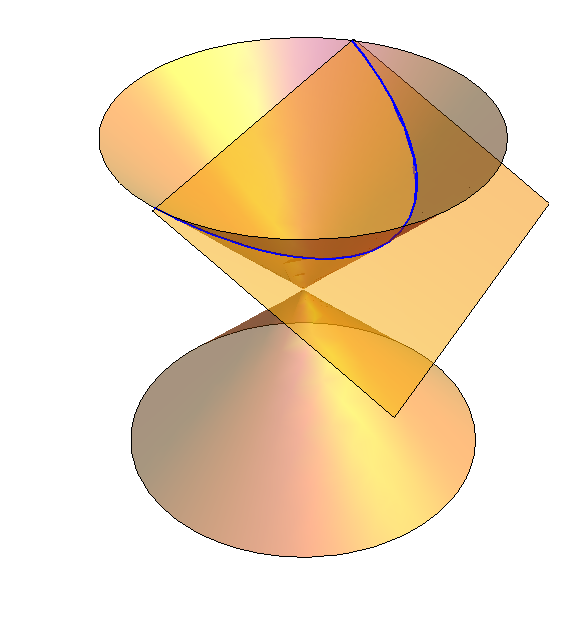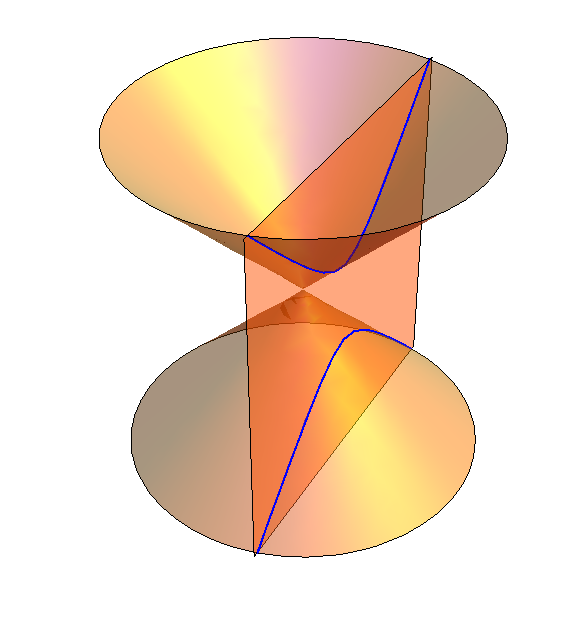Main page
Chapter 10: Parametric Equations and Polar Coordinates
Learning module LM 10.1: Parametrized Curves:
Learning module LM 10.2: Calculus with Parametrized Curves:
Learning module LM 10.3: Polar Coordinates:
Learning module LM 10.4: Areas and Lengths of Polar Curves:
Learning module LM 10.5: Conic Sections:
Slicing a coneEllipses
Hyperbolas
Parabolas and directrices
Completing the square
Learning module LM 10.6: Conic Sections in Polar Coordinates:
Chapter 12: Vectors and the Geometry of Space
Chapter 13: Vector Functions
Chapter 14: Partial Derivatives
Chapter 15: Multiple Integrals
Slicing a cone
Circles, ellipses, parabolas and hyperbolas are called conic sections. They can all be obtained by slicing the cone x2+y2=z2 with a plane.
| Example 1: If the plane is horizontal, (say, z=1) then we get a circle (say, x2+y2=1). |
|
| Example 2: If the plane is tilted less than 45 degrees, then we get a stretched circle, better known as an ellipse. |
|
| Example 3: If the plane is tilted exactly 45 degrees (say, z=y+1), then:y+1=z,y2+2y+1=z2,y2+2y+1=x2+y2,2y=x2−1.This is a parabola. |
|
| Example 4: If the plane is tilted more than 45 degrees, then it hits the cone in two pieces. For instance, if we take the plane y=1, then z2=x2+y2,z2=x2+1,z2−x2=1.This is a hyperbola. |
|
Conic sections come up throughout science, and especially in physics and astronomy. If you throw a ball across the room, its trajectory will be a parabola. The earth and other planets move in ellipses around the sun. A comet that has barely enough energy to escape from the sun's gravity will move in a parabolic orbit, and if it has more energy than that, its orbit will be a hyperbola.
[Note: Conic sections can be obtained by slicing any cone with a plane, but the equations come out simplest when we use the 'standard' cone x2+y2=z2.]



